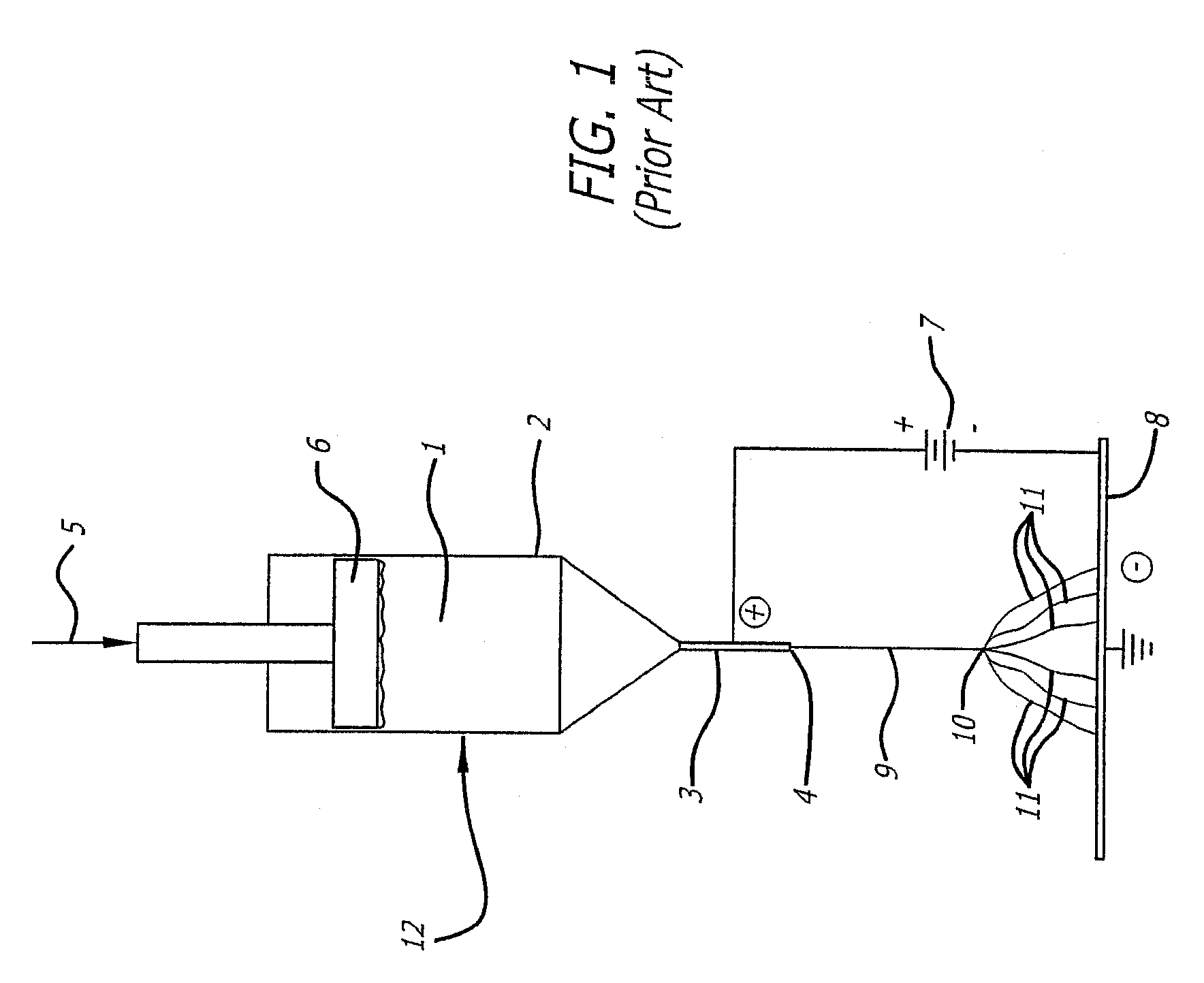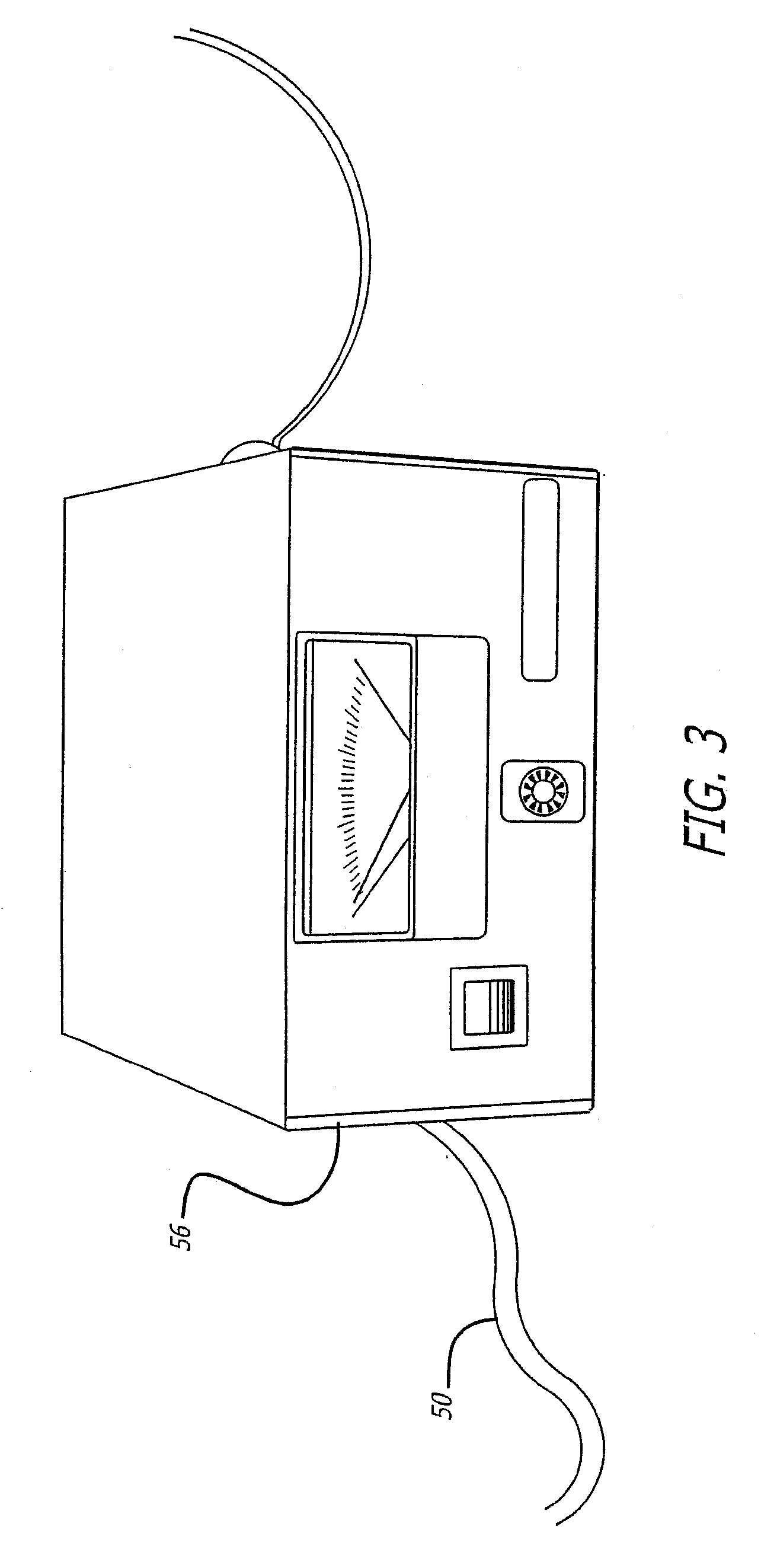Electrospun Skin Capable Of Controlling Drug Release Rates And Method
a technology of electronic skin and drug release rate, which is applied in the direction of prosthesis, blood vessels, weaving, etc., can solve the problems of difficult dip coating of very small stents, open gap between wires, and dangerous situations, so as to improve conductivity, reduce manufacturing costs, and improve the effect of conducting performan
- Summary
- Abstract
- Description
- Claims
- Application Information
AI Technical Summary
Benefits of technology
Problems solved by technology
Method used
Image
Examples
Embodiment Construction
[0043] Mechanical Setup of the Electrospinning Process of the Present Invention
[0044] Referring now to FIG. 2, there is shown a preferred mechanical setup of the electrospinning process of the present invention. Though some of the components are similar to those of FIG. 1, all components have been given new numbers for purposes of clarity.
[0045] The electrospinning apparatus 20 includes a spinneret 22 over a spinning chamber 24, which is defined at its lower end by a collection plate 26. The spinneret 22 is mounted to the carriage 28 of an x-y translator 30, which is preferably an electronically controlled motion system. The x-y translator 30 relocates the spinneret 22 anywhere within the spinning chamber 24 in a horizontal plane at the top of the chamber.
[0046] The x-y translator 30 includes an x motor 32 that is operably attached to a first belt 34 for translating the carriage 28 along a pair of first horizontal guide bars 36. The translator 30 also includes a y motor 38 that i...
PUM
| Property | Measurement | Unit |
|---|---|---|
| diameters | aaaaa | aaaaa |
| diameter | aaaaa | aaaaa |
| diameter | aaaaa | aaaaa |
Abstract
Description
Claims
Application Information
 Login to View More
Login to View More - R&D
- Intellectual Property
- Life Sciences
- Materials
- Tech Scout
- Unparalleled Data Quality
- Higher Quality Content
- 60% Fewer Hallucinations
Browse by: Latest US Patents, China's latest patents, Technical Efficacy Thesaurus, Application Domain, Technology Topic, Popular Technical Reports.
© 2025 PatSnap. All rights reserved.Legal|Privacy policy|Modern Slavery Act Transparency Statement|Sitemap|About US| Contact US: help@patsnap.com



